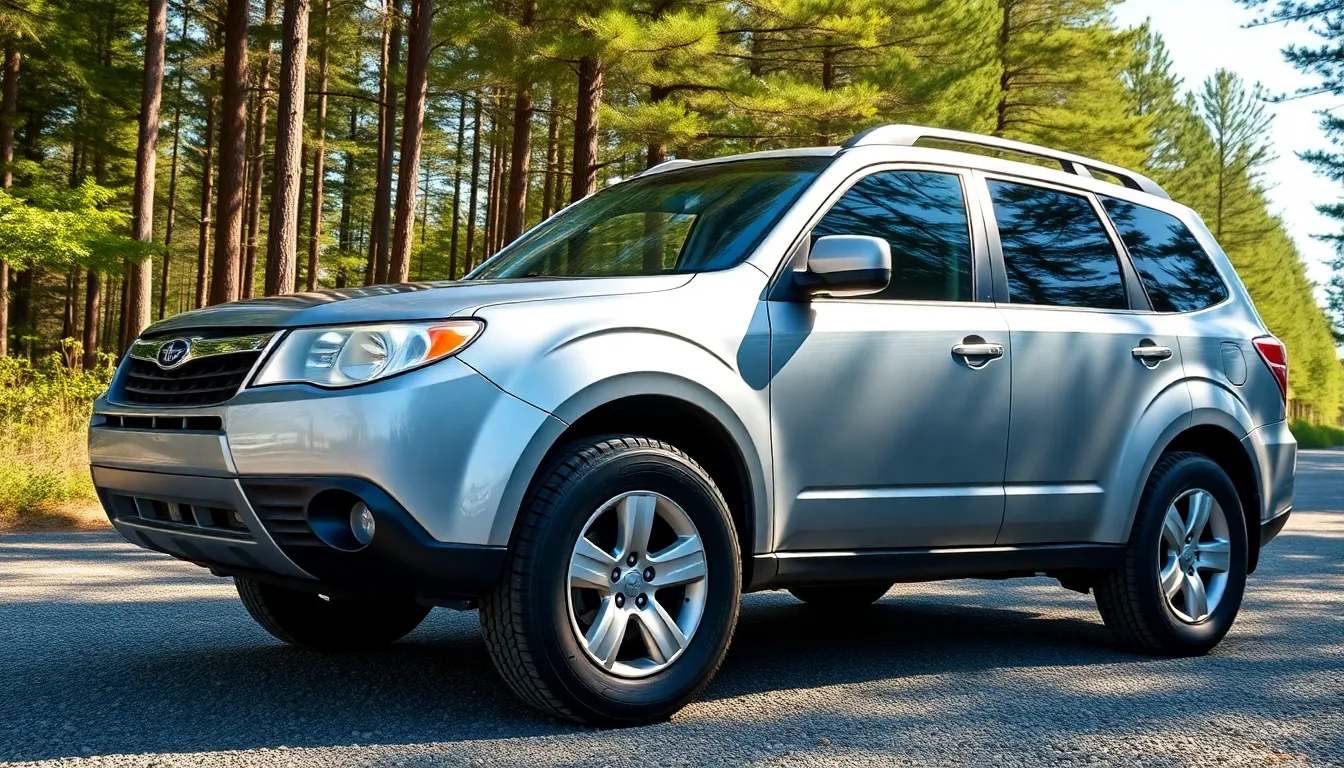Getting the right tire size for your 2009 Subaru Forester isn’t just about safety – it’s about unlocking your vehicle’s full potential. We’ve all been there: standing in front of countless tire options wondering which ones will give us the perfect blend of performance, comfort, and value.
Your ’09 Forester came from the factory with exact tire dimensions that were carefully engineered to work with its all-wheel-drive system and suspension geometry. But here’s what most drivers don’t realize – understanding these specifications opens up opportunities for upgrades that can transform your driving experience.
Whether you’re planning to tackle snowy mountain roads, cruise through city streets, or venture off the beaten path, choosing the correct tire size affects everything from fuel economy to handling. We’ll break down exactly what you need to know about your 2009 Forester’s tire requirements, so you can make an well-informed choice that keeps you safe and satisfied on every journey.
2009 Subaru Forester Original Equipment Tire Specifications
The 2009 Subaru Forester comes equipped with 215/65R16 tires as the factory standard specification across all trim levels. These dimensions translate to a tire width of 215 millimeters, an aspect ratio of 65%, and a 16-inch wheel diameter that maintains optimal ground clearance for the Forester’s crossover design.
Subaru engineers selected this tire size to maximize the vehicle’s all-wheel-drive capabilities while ensuring proper speedometer calibration and drivetrain balance. Load index ratings of 98 support up to 1,653 pounds per tire, which accommodates the Forester’s curb weight of approximately 3,285 pounds plus cargo and passengers.
Speed ratings vary between H and T depending on the exact tire manufacturer installed at the factory. H-rated tires handle speeds up to 130 mph, while T-rated options accommodate speeds up to 118 mph, both exceeding typical driving requirements for this SUV category.
| Specification | Value |
|---|---|
| Tire Size | 215/65R16 |
| Load Index | 98 (1,653 lbs) |
| Speed Rating | H or T |
| Wheel Diameter | 16 inches |
| Tire Width | 215 mm |
| Aspect Ratio | 65% |
Original equipment manufacturers for 2009 Forester tires include Bridgestone Turanza EL400, Yokohama Geolandar G91, and Continental ContiEcoContact EP. Each brand maintains the same dimensional specifications while offering slightly different tread patterns and rubber compounds optimized for all-season performance.
Tire pressure specifications call for 32 PSI in both front and rear positions when carrying normal loads. This pressure setting balances ride comfort with fuel efficiency while preventing excessive tire wear patterns that commonly affect the Forester’s front tires due to the vehicle’s weight distribution.
Understanding Tire Size Numbers and What They Mean
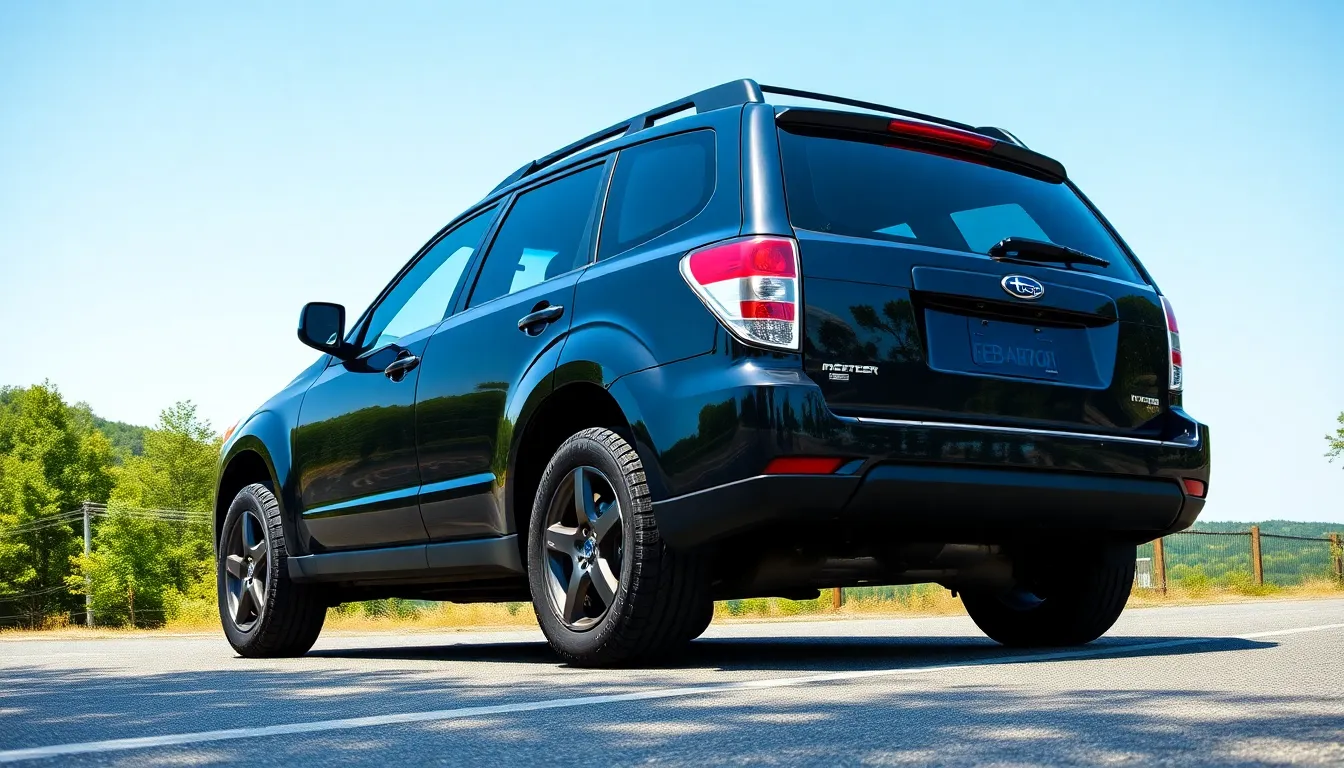
Tire size codes contain exact information that determines compatibility with your 2009 Subaru Forester. Each number and letter sequence provides critical details about dimensions, construction, and performance capabilities.
Breaking Down the Tire Size Code
The standardized tire size format follows a exact pattern that reveals essential measurements. Using 215/65R16 as our example, each component serves a distinct purpose for your Forester’s performance.
215 represents the section width measured in millimeters from sidewall to sidewall. This measurement affects contact patch size and influences traction characteristics on various road surfaces.
65 indicates the aspect ratio, expressing sidewall height as a percentage of section width. Calculating this means the sidewall measures 65% of 215mm, resulting in approximately 140mm of sidewall height.
R designates radial construction, the standard tire building method for passenger vehicles. Radial tires feature cord plies running perpendicular to the tread direction, providing better fuel economy and longer tread life.
16 specifies the wheel diameter in inches that accommodates this tire size. Your Forester’s factory wheels measure exactly 16 inches across the rim diameter.
Load Index and Speed Rating Explained
Load index and speed ratings appear after the tire size code, typically showing combinations like 96H or 95H for 2009 Forester applications. These ratings determine safe operating limits for weight capacity and maximum speeds.
| Rating Type | 2009 Forester Standard | Maximum Capacity |
|---|---|---|
| Load Index 96 | 215/65R16 tires | 710 kg (1,565 lbs) per tire |
| Load Index 95 | 225/55R17 tires | 690 kg (1,521 lbs) per tire |
| Speed Rating H | Both tire sizes | 130 mph (210 km/h) |
Load index numbers correlate to exact weight limits that each tire supports safely. Index 96 handles 710 kg per tire, providing adequate capacity for your Forester’s 3,285 pound curb weight plus passengers and cargo.
Speed ratings use letters to indicate maximum sustained speeds under proper conditions. Rating H permits continuous operation up to 130 mph, exceeding typical highway speeds and providing safety margins for emergency maneuvers.
Exceeding load or speed ratings compromises tire integrity and vehicle safety. Always verify these specifications match or exceed your driving requirements and vehicle manufacturer recommendations.
OEM Tire Options for the 2009 Subaru Forester
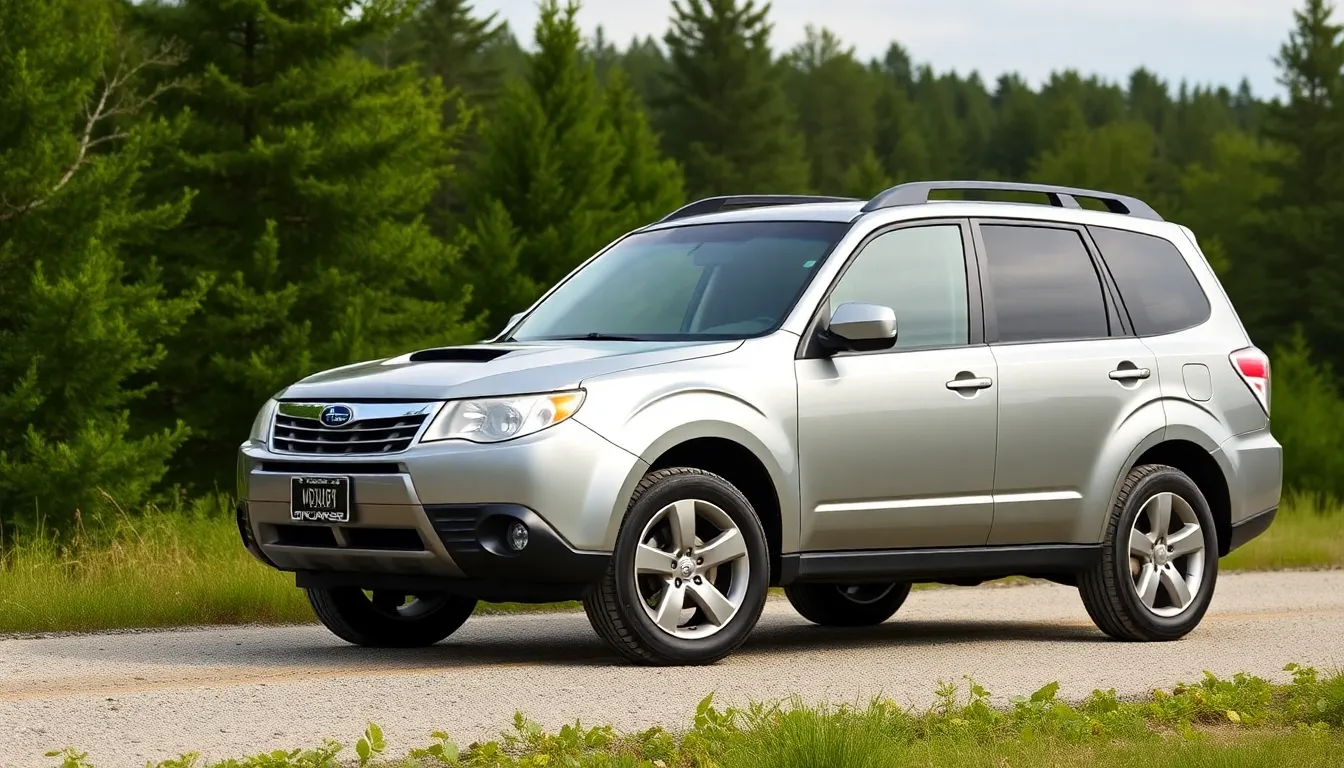
Subaru equipped different trim levels of the 2009 Forester with distinct tire specifications. Each configuration balances performance characteristics with the exact features of its respective trim.
Base Model Tire Specifications
The 2.5 X Base Model uses 215/65R16 tires as its factory specification. This size provides optimal ground clearance and maintains the vehicle’s all-wheel-drive system calibration for entry-level configurations.
Base model specifications focus on cost effectiveness while delivering reliable all-season performance. Subaru selected this dimension to complement the standard suspension tuning and wheel design found on base trim vehicles.
Premium Trim Tire Differences
Premium and Limited trims feature 225/55R17 tires across multiple configurations. The 2.5 X Limited, 2.5 X Premium Package, 2.5 XT Base Model, and 2.5 XT Limited all use this larger specification.
Enhanced performance characteristics come with the wider 225mm section width compared to the base model’s 215mm dimension. Lower sidewall profile at 55% aspect ratio versus 65% improves handling response and cornering stability.
Regional availability affects tire options for certain models, with the 2.0D variant accommodating three different sizes. This diesel configuration accepts 215/65R16, 225/55R17, or 225/50R18 depending on wheel diameter and trim specifications.
| Trim Level | Tire Size | Section Width | Aspect Ratio | Wheel Diameter |
|---|---|---|---|---|
| 2.5 X Base | 215/65R16 | 215mm | 65% | 16 inches |
| 2.5 X Limited | 225/55R17 | 225mm | 55% | 17 inches |
| 2.5 X Premium | 225/55R17 | 225mm | 55% | 17 inches |
| 2.5 XT Base | 225/55R17 | 225mm | 55% | 17 inches |
| 2.5 XT Limited | 225/55R17 | 225mm | 55% | 17 inches |
Larger wheel packages accommodate 225/50R18 tires on exact trim configurations. These 18-inch setups provide the lowest sidewall profile at 50% aspect ratio for maximum handling precision.
Popular Aftermarket Tire Size Alternatives
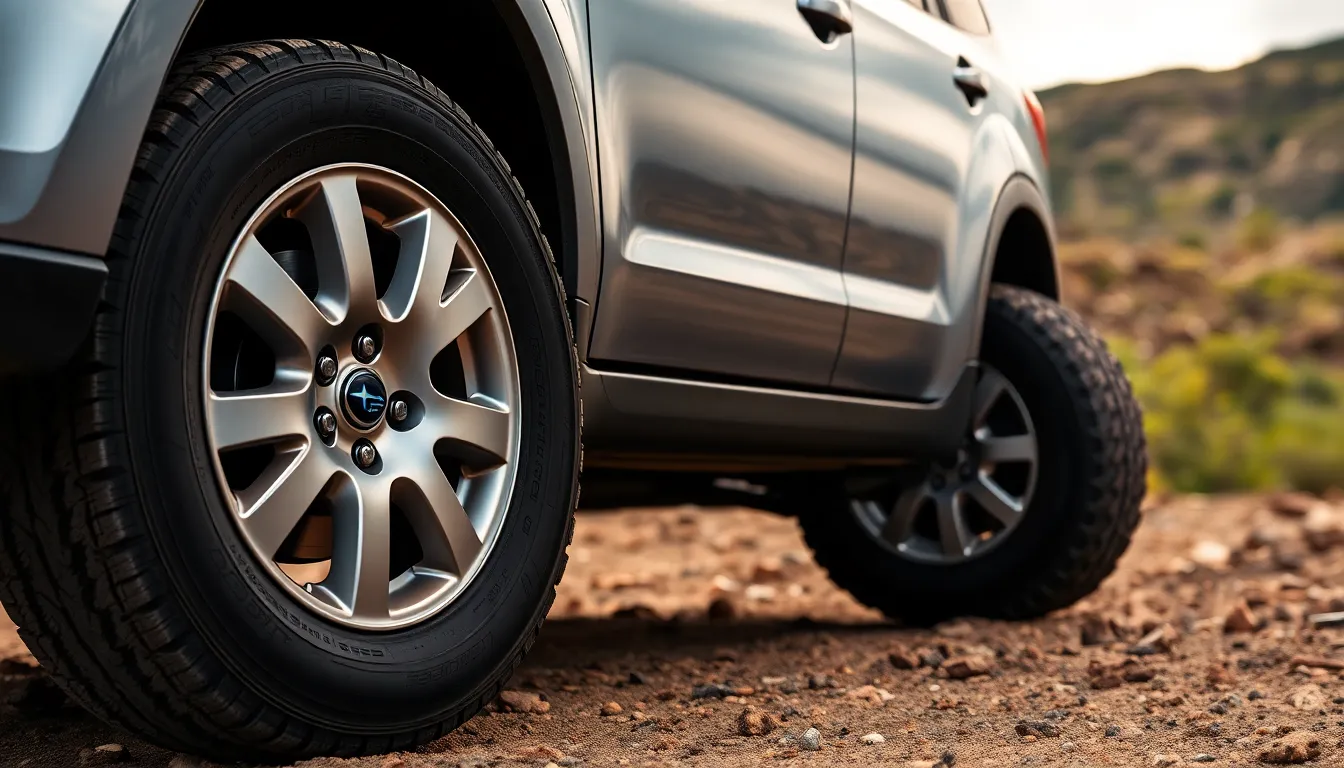
Aftermarket tire upgrades expand beyond factory specifications while maintaining compatibility with the 2009 Forester’s drivetrain systems. These alternatives focus on exact performance enhancements or driving conditions that standard equipment doesn’t fully address.
Plus-Sizing Options for Enhanced Performance
Plus-sizing configurations enhance handling characteristics by increasing wheel diameter while reducing sidewall height proportionally. The 225/60R17 setup offers a slightly taller sidewall compared to the Premium trim’s factory 225/55R17, delivering improved comfort during daily driving while maintaining responsive steering feedback.
Moving to 18-inch wheels accommodates 225/50R18 tires that provide maximum handling precision for enthusiasts seeking sportier driving dynamics. This configuration reduces sidewall flex during cornering while maintaining the same overall diameter as factory specifications. The lower profile appearance creates a more aggressive visual stance without compromising the all-wheel-drive system’s calibration.
Both configurations maintain proper load ratings and speed capabilities required for safe operation. The 17-inch setup balances performance improvements with ride quality, making it ideal for drivers who prioritize comfort alongside enhanced handling. Meanwhile, 18-inch configurations maximize steering response and cornering stability for performance-oriented applications.
All-Terrain and Winter Tire Considerations
All-terrain tires transform the Forester’s off-road capabilities through aggressive tread patterns designed for varied surface conditions. BFGoodrich All-Terrain T/A KO2 models exemplify this category, featuring reinforced sidewalls and deep tread blocks that excel on gravel, dirt, and light rock surfaces while maintaining acceptable on-road performance.
Winter tire applications require specialized compounds and tread designs optimized for temperatures below 45°F. Michelin X-Ice series delivers exceptional grip on snow and ice through advanced rubber formulations that remain flexible in cold conditions. Nokian Hakkapeliitta models incorporate metal studs or advanced siping patterns that bite into icy surfaces for maximum traction during harsh winter months.
Load-carrying capacity and speed ratings must match or exceed original equipment specifications regardless of seasonal application. All-terrain options typically maintain H-speed ratings suitable for highway driving, while winter tires often carry T-ratings that accommodate normal driving speeds during adverse weather conditions.
How to Choose the Right Tire Size for Your Driving Needs
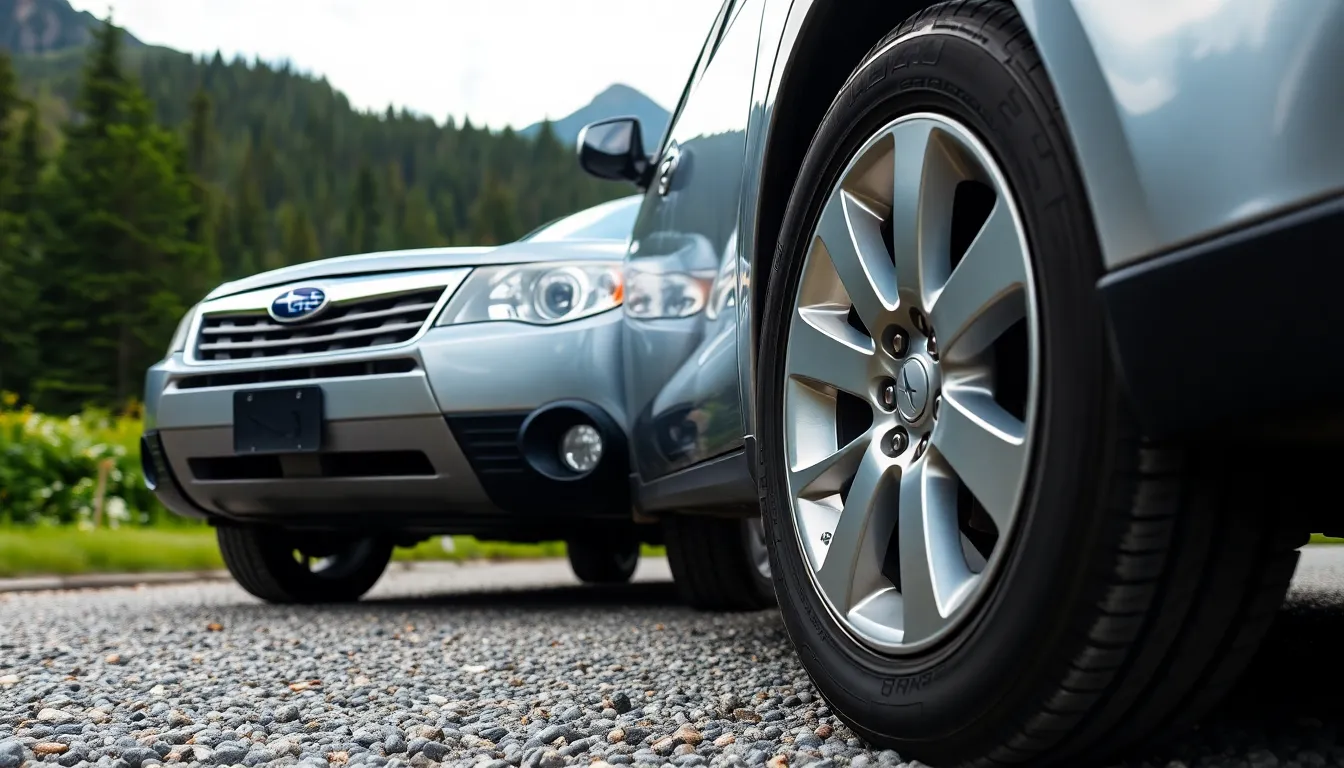
Selecting the appropriate tire size for your 2009 Subaru Forester depends on matching your exact driving patterns with the performance characteristics each size offers. We recommend evaluating your primary use case alongside environmental factors to optimize both safety and vehicle performance.
Daily Commuting vs Off-Road Performance
Daily commuting benefits most from the factory 215/65R16 configuration, which delivers optimal fuel efficiency and ride comfort for highway and city driving. These tires maintain proper speedometer calibration while supporting the Forester’s 3,285-pound curb weight with their 98 load index rating.
Off-road enthusiasts gain important advantages from upgrading to 225/55R17 or 225/50R18 tire sizes found on Premium and Limited trims. Wider section widths improve traction on loose surfaces like gravel and dirt, while the increased contact patch enhances stability during cornering on uneven terrain.
Ground clearance considerations favor the taller sidewall profile of 215/65R16 tires, providing an additional 0.8 inches compared to 225/50R18 setups. Trail driving requires this extra clearance to avoid damage from rocks and debris.
Performance oriented drivers prefer the 225/50R18 configuration for its lower sidewall profile and improved handling response. These tires reduce sidewall flex during aggressive cornering while maintaining the load carrying capacity required for the Forester’s drivetrain system.
Climate and Seasonal Considerations
All-season tires work effectively in moderate climates where temperatures remain above 45°F for most of the year. The factory Bridgestone, Yokohama, and Continental options provide adequate traction for light snow and wet conditions without seasonal tire changes.
Winter tire installations become essential when temperatures consistently drop below 45°F or when encountering snow depths exceeding 2 inches. Dedicated winter compounds maintain flexibility in cold conditions, improving braking distances by up to 30% compared to all-season alternatives.
Summer tire compounds excel in hot climates above 70°F, offering superior grip and handling precision through specialized rubber formulations. But, these tires lose effectiveness rapidly when temperatures approach freezing, making them unsuitable for year-round use in northern climates.
Tire pressure adjustments accommodate seasonal temperature variations, with cold weather requiring increases of 1-2 PSI above the recommended 32 PSI to maintain proper contact patch geometry. Hot weather driving may necessitate slight pressure reductions to prevent overinflation from thermal expansion.
Installation and Maintenance Tips

Proper installation and ongoing maintenance directly impact your 2009 Subaru Forester’s tire performance and safety. Following manufacturer specifications ensures optimal all-wheel-drive system operation and prevents premature tire wear.
Professional vs DIY Installation
Professional installation provides trained technicians with specialized equipment to mount, balance, and align your 215/65R16 or 225/55R17 tires correctly. Certified shops follow the 89-108 Nm (66-80 ft-lbs) torque specifications for lug nut tightening and verify wheel alignment after installation. Most professional services include inspection of suspension components and warranty protection against mounting defects.
DIY installation requires exact tools including a hydraulic jack, jack stands, and calibrated torque wrench to achieve proper specifications. Home installation carries risks of incorrect mounting, improper balancing, or over-tightening that can damage wheel studs or brake components. Vehicle warranties may become void if incorrect installation procedures cause drivetrain damage or suspension misalignment.
| Installation Type | Equipment Required | Torque Specification | Warranty Coverage |
|---|---|---|---|
| Professional | Specialized mounting equipment | 89-108 Nm (66-80 ft-lbs) | Included |
| DIY | Jack, stands, torque wrench | 89-108 Nm (66-80 ft-lbs) | May void warranty |
Proper Tire Pressure and Rotation Schedule
Tire pressure for your 2009 Forester maintains 32-35 PSI across all positions according to the door jamb specifications. Monthly pressure checks prevent uneven wear patterns and maintain fuel efficiency ratings. Temperature changes affect pressure by approximately 1 PSI per 10-degree Fahrenheit variation.
Rotation schedules extend tire life through even tread wear distribution every 6,000-8,000 miles of driving. Front-to-rear rotation patterns work best for the Forester’s all-wheel-drive system without compromising traction control calibration. Regular rotation prevents the 215/65R16 factory tires from developing cupping or irregular wear that reduces handling performance.
Tread depth monitoring using the penny test or depth gauge ensures replacement at 2/32-inch minimum depth. Visual inspections identify sidewall damage, punctures, or bulges that compromise structural integrity before catastrophic failure occurs.
Cost Considerations and Where to Buy
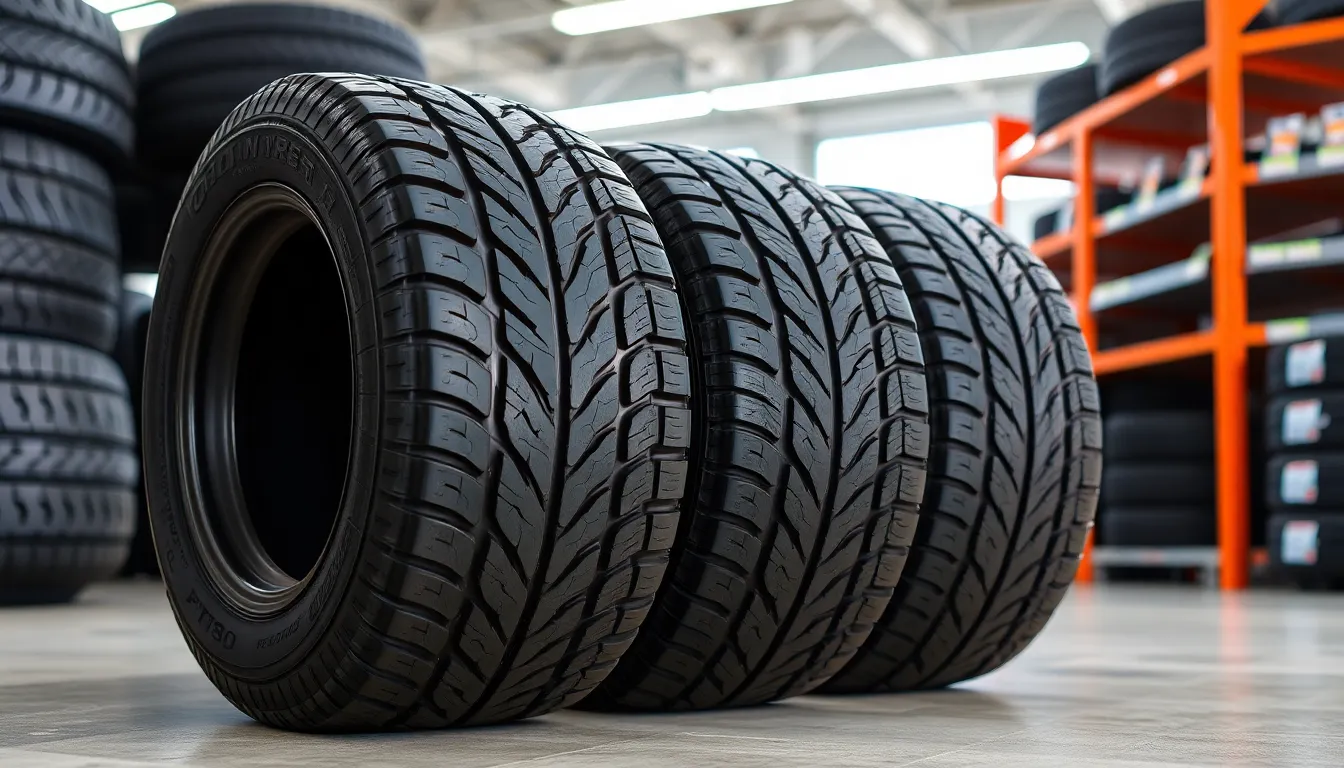
Tire costs for the 2009 Subaru Forester vary significantly based on size and brand selection. Basic tires start around $100 to $150 per tire while premium options range between $200 to $400 per tire. Budget conscious drivers can expect to spend approximately $400 to $600 for a complete set of standard tires. Performance oriented buyers investing in premium brands typically pay $800 to $1,600 for four tires.
Size differences impact pricing with 215/65R16 tires generally costing less than larger 225/55R17 or 225/50R18 options. Manufacturers like Bridgestone, Yokohama, and Continental offer original equipment replacements at moderate price points. Premium brands such as Michelin and Pirelli command higher prices but deliver enhanced performance characteristics.
Goodyear Auto Service provides comprehensive tire selection for various trim levels including the X Limited package. Customers benefit from professional installation services and alignment checks. Online retailers like Tire Rack and Discount Tire offer competitive pricing with detailed specifications matching your vehicle requirements.
Local Subaru dealerships maintain inventory specifically designed for the 2009 Forester’s all wheel drive system. Dealership purchases include proper torque specifications and warranty coverage. Installation services ensure correct mounting procedures that maintain drivetrain balance.
Promotional opportunities reduce overall tire costs throughout the year. Manufacturer rebates often provide $50 to $100 savings on complete sets. Seasonal sales events typically occur during spring and fall months when drivers prepare for weather changes.
Purchasing timing affects both price and availability with winter tire demand creating seasonal price fluctuations. Planning purchases during off peak periods maximizes savings potential. Bulk purchases of complete sets rather than individual tire replacements reduce per unit costs significantly.
Conclusion
Getting the right tire size for your 2009 Subaru Forester isn’t just about following specifications – it’s about optimizing your vehicle’s performance for your exact needs. Whether you stick with the factory 215/65R16 setup or explore aftermarket alternatives the key is maintaining compatibility with your Forester’s AWD system.
We’ve covered everything from understanding tire codes to choosing between all-season and specialized options. Remember that proper installation and regular maintenance will maximize your investment and keep you safe on the road.
Your tire choice directly impacts fuel economy handling and overall driving satisfaction. Take time to evaluate your driving conditions budget and performance expectations before making your final decision. With the right tires your 2009 Forester will continue delivering the reliable all-weather capability Subaru is known for.
Frequently Asked Questions
What is the factory tire size for a 2009 Subaru Forester?
The standard factory tire size for a 2009 Subaru Forester is 215/65R16 across all base trim levels. However, Premium and Limited trims feature 225/55R17 tires for enhanced performance. The 2.0D variant may use 215/65R16, 225/55R17, or 225/50R18 depending on the specific trim level and wheel configuration.
What do the numbers in tire size 215/65R16 mean?
In the tire size 215/65R16, “215” represents the section width in millimeters, “65” is the aspect ratio (sidewall height as percentage of width), “R” indicates radial construction, and “16” specifies the wheel diameter in inches. This coding system helps determine the tire’s dimensions and compatibility with your vehicle.
What is the recommended tire pressure for a 2009 Subaru Forester?
The recommended tire pressure for a 2009 Subaru Forester is 32 PSI for both front and rear tires. This pressure balances ride comfort with fuel efficiency while preventing excessive tire wear. You may adjust pressure seasonally, maintaining 32-35 PSI range based on temperature variations and driving conditions.
Can I use different tire sizes on my 2009 Subaru Forester?
Yes, you can use alternative tire sizes like 225/60R17 or 225/50R18 for plus-sizing upgrades. However, any replacement tires must maintain compatible overall diameter to preserve speedometer accuracy and all-wheel-drive system calibration. Always ensure load index and speed ratings meet or exceed original equipment specifications for safety.
How much do replacement tires cost for a 2009 Subaru Forester?
Tire costs vary significantly by size and brand. Basic tires range from $100-$150 each, while premium options cost $200-$400 per tire. A complete set typically costs $400-$600 for standard tires or $800-$1,600 for premium brands. The 215/65R16 size generally costs less than larger alternatives like 225/55R17.
What are the best tire brands for a 2009 Subaru Forester?
Original equipment manufacturers include Bridgestone, Yokohama, and Continental, all offering excellent all-season performance. For specific needs, consider BFGoodrich All-Terrain T/A KO2 for off-road use or Michelin X-Ice series for winter conditions. Choose brands that match your driving style and climate requirements while meeting OEM specifications.
How often should I rotate tires on my 2009 Subaru Forester?
Rotate your tires every 6,000-8,000 miles to promote even tread wear and extend tire life. Regular rotation is especially important for the Forester’s all-wheel-drive system, which can cause uneven wear patterns. Follow the rotation pattern recommended in your owner’s manual for optimal performance and longevity.
Should I install tires myself or use a professional service?
Professional installation is recommended to ensure correct mounting, balancing, and alignment. This prevents potential safety issues and warranty voiding that can occur with improper DIY installation. Professional services also provide proper torque specifications and can identify potential issues with wheels, brakes, or suspension components during installation.

